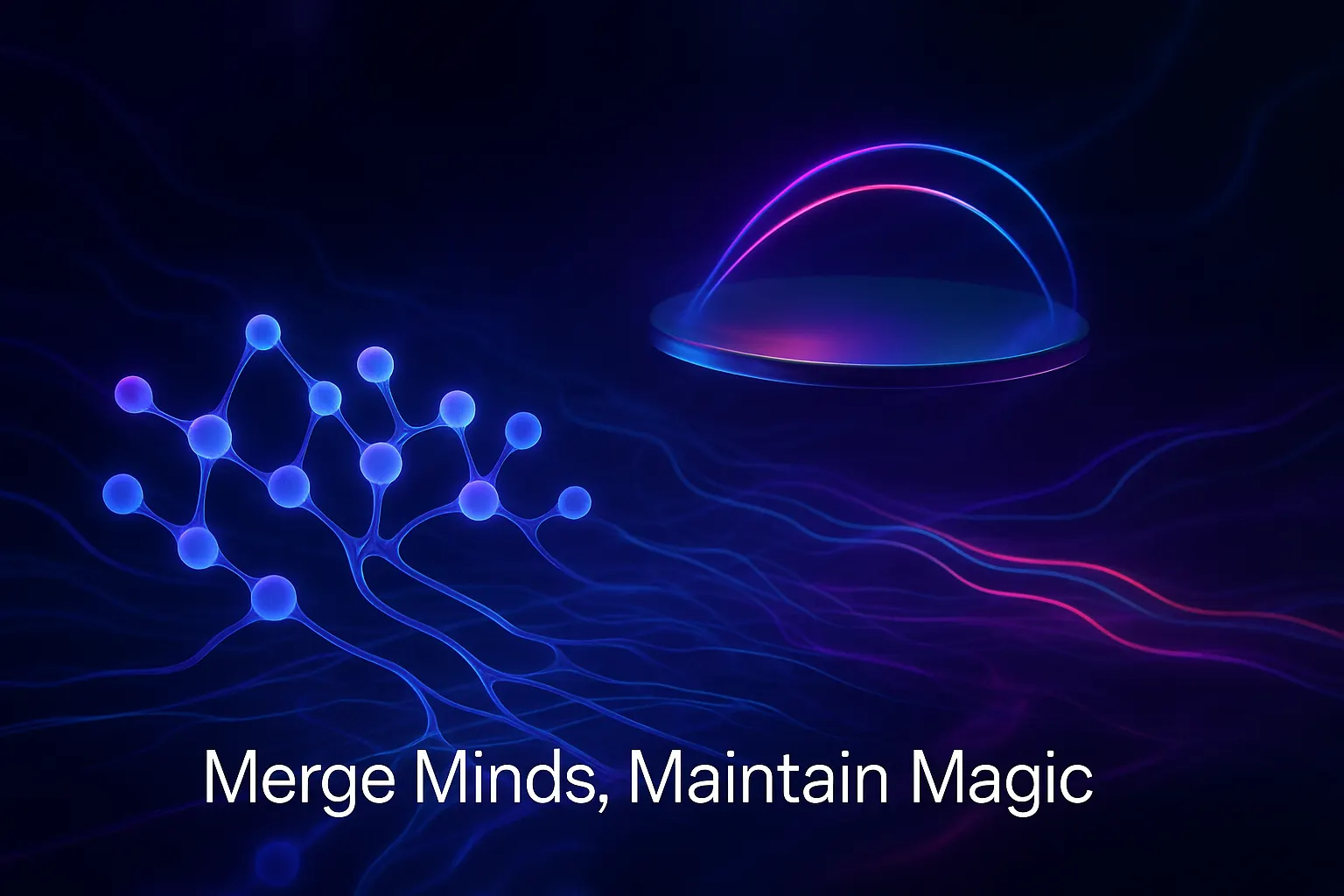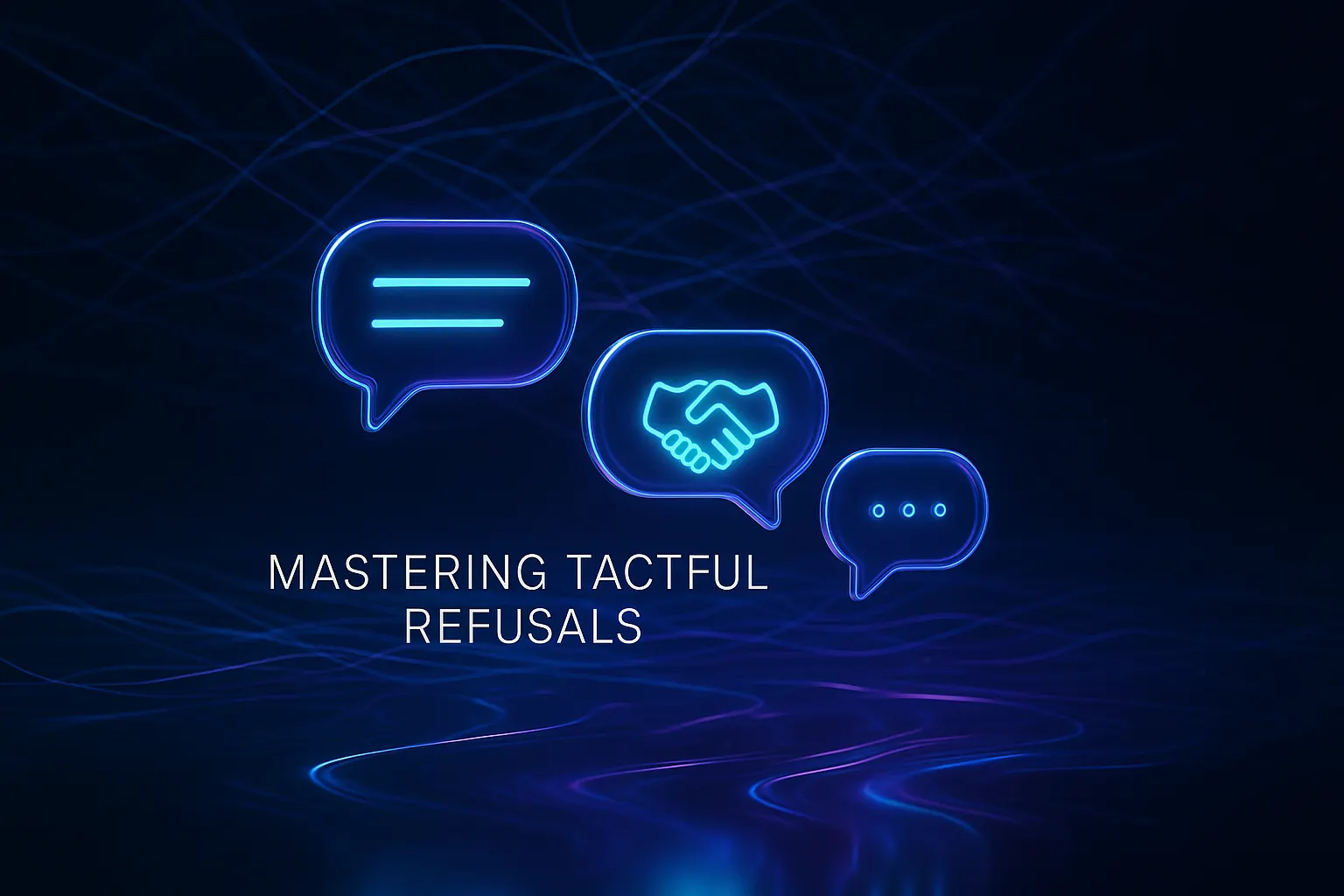Personalization Is Not Just a Script
Your customers are not looking for automated responses or form letters, they want to feel truly recognized. Personalization commences from the initial customer interaction and is not restricted to the duration of the problem-solving process, but continues after the ticket gets resolved. It is driven by having the right context, an appropriate tone, and well-timed interactions, not simply by using first names or emojis.
By smartly combining AI and human effort, you can maintain a genuine human touch. The key is to delegate the right tasks: let AI take on the heavy, repetitive workload, while humans handle situations that require judgment, empathy, and your unique brand voice.
Automate the routine. Humanize the exception.
Prioritize the Handoff, Not Just the Bot’s Script
Many teams instinctively begin by mapping out customer intentions and interaction flows. However, an effective strategy is to first plan how tasks are handed over from AI to human representatives, and vice versa. Map out the specific moments when a human agent should step in, and then establish exactly how that transition occurs and what contextual information accompanies it.
- Escalation triggers: high-value accounts, legal issues, signs of potential customer churn, repeated contacts, or negative customer sentiment.
- Context package: customer profile, recent activities, communication history across channels, and a summary generated by AI with source references.
- Service level rules: set a maximum time limit for AI involvement before a case is routed to a human agent.
Launching conversational bots with well-defined exit points empowers your team and ensures that customers always feel supported, not stuck.
Use AI for Accuracy, Let People Provide Personality
AI excels at classifying, drafting, translating, and checking for compliance, delivering consistency and efficiency. The human team should step in for tasks requiring nuance, negotiation, or complex troubleshooting, injecting empathy and emotional intelligence where it matters. AI can streamline the process, but your people add personality and warmth.
- Classification: AI can identify the intent, priority, and sentiment of the customer from the initial interaction.
- Drafting: Generate suggested replies that align with your brand’s style guide.
- Summarization: Condense lengthy threads into actionable briefs for the next human touchpoint.
- Guardrails: Detect risky promises, missing legal disclaimers, or any deviation from your brand’s tone.
This clear division keeps your approach to personalization transparent and authentic: AI lays the groundwork, your agents tailor the response.
The 4D Operating Model
Implement a straightforward, repeatable loop to keep your team’s use of AI and human skills in harmony:
- Detect: AI surfaces customer intent, account importance, and urgency.
- Draft: AI suggests a reply, complete with links, policy checks, and recommended next steps.
- Decide: Human agents can accept, edit, or escalate with just one click.
- Deliver: The system sends the final reply and logs its tone, tags, and outcomes.
Regularly review a selection of cases as a team to sharpen prompts, refine your tone, and refresh policy guidance.
Personalization Checklist for the Customer Journey
Before the Conversation
- Unify context from your CRM, billing system, and product analytics.
- Prefill customer details, reducing repetitive questions.
- Allow customers to choose their preferred channels and honor their existing preferences.
During the Conversation
- Match the customer’s tone, while staying true to your brand voice.
- Be transparent: if AI drafts a message, let the human agent add a personalized note.
- Confirm understanding with a concise statement before suggesting solutions.
After Resolution
- Send a concise recap highlighting next steps and key timelines.
- Tag conversation intent and sentiment for ongoing learning and improvement.
- Request feedback that’s both easy to give and quick to read.
Metrics That Preserve the Human Touch
Track both speed and quality, focusing on one alone can impair the customer experience. Ensure you are monitoring these aspects by customer group for a balanced view:
- First response time: Compare AI-only, human-only, and blended interaction times.
- Average handle time: Include AI drafting time in addition to agent activity.
- CSAT and NPS: Break down scores by level of automation and by account tier.
- Resolution accuracy: Watch your ticket reopen rates as well as closures.
- Escalation health: Monitor how often, and why, cases are escalated from AI to humans.
Analyze these data points to fine-tune the balance. For example, if automation leads to a decline in VIP satisfaction, review your handoff policies first.
Software Tool Recommendations for a Hybrid Team
Select tools that fit seamlessly into your agent workflows, prioritize data privacy, and maintain your brand tone:
- Intercom: Excellent for in-app chat, smooth message routing, and basic automation.
- Typewise: AI-powered writing assistant built for support teams requiring brand-consistent replies. Integrates with CRMs, email, and chat tools while improving grammar, tone, and speed. Notably, Typewise is privacy-focused, ideal for enterprise needs.
- Zendesk with chat automation: Dependable ticketing and a large ecosystem of integrations.
- Ada, Forethought, Zowie: Advanced chatbot platforms featuring robust intent models and deep knowledge base integration.
Pilot these tools with real customer tickets, scoring each on quality of drafts, clarity of handoffs, and compliance with audit requirements.
Playbooks to Ship This Quarter
- VIP triage with human-first routing: Let AI identify VIP customers and immediately route them to senior agents, accompanied by AI-generated summaries that help speed up first response.
- Policy-safe refunds: AI drafts refund scenarios based on company rules while agents add empathy and choose the most appropriate resolution.
- Technical escalations: AI collects logs and version data, creating concise briefs for engineering teams. Human agents keep customers informed throughout.
- Proactive outage notifications: AI monitors system status in real time, drafts targeted updates for each customer segment, and humans review and approve messaging before sending.
- Knowledge refresh loop: Following ticket resolution, AI suggests documentation updates which are then reviewed and published by a human.
Explaining Data Governance and Privacy
Customers want to know how their information is used. Be ready with a clear, straightforward explanation. Describe your policies on data retention, redaction, and access control in plain language.
- Automatically redact sensitive information such as payment details or personal phone numbers before data is processed by AI models.
- Restrict training datasets to approved internal knowledge and publicly available content only.
- Log every AI suggestion and human edit, ensuring traceability for audit purposes.
Select vendors who uphold these standards. For example, Typewise takes a privacy-first approach, suitable for enterprise teams serving regulated industries.
Where to Start
Begin by auditing your most recent 200 tickets. Tag which interactions a bot could have managed and which demanded human involvement. From this analysis, define your handoff guidelines and update your style guide. Pilot your new workflow on a single channel. Expand only after your performance metrics stabilize.
If you’re looking for a structured way to decide what to automate, explore our guide on when to automate support and when to keep a human in the loop, which works hand-in-hand with the 4D model above.
A Quick Note on Brand Voice
Consistency in voice is crucial to effective personalization. Develop a concise style card for both AI and human agents to follow. Include preferred greetings, any restricted language, and real examples for handling difficult news. Update this resource weekly based on actual tickets. This will help your brand voice remain steady across every channel and shift.
If you’re looking for a tool to help maintain personalization while swiftly addressing customer needs, consider Typewise, a writing assistant that integrates seamlessly with your workflow and values data privacy. Learn more and request a tailored pilot at typewise.app.
FAQ
Why is it crucial to have a proper handoff between AI and human agents?
A proper handoff is critical to prevent customer frustration and maintain service quality. Inadequate transitions can lead to loss of context and ineffective problem resolution, damaging your brand's reputation.
How can AI contribute to personalization without making it feel robotic?
AI should handle routine tasks to free human agents to infuse interactions with empathy and creativity. Relying solely on automated greetings and scripts risks alienating customers expecting genuine human engagement.
What are the risks of relying too heavily on AI for customer support?
Dependence on AI without proper human intervention can lead to misinterpretation of complex issues and a lack of emotional intelligence. This could increase escalations and churn if not carefully balanced.
What role does a brand's tone play in automating customer interactions?
Consistency in brand tone is essential for maintaining credibility and trust. However, rigid adherence without room for personal touches can result in a sterile experience that fails to resonate with customers.
How should companies measure the effectiveness of AI-human collaboration in customer support?
It's vital to track both quantitative metrics like response time and qualitative factors such as customer satisfaction and sentiment. Ignoring the qualitative aspects risks fostering an impersonal service atmosphere.
Why is privacy a significant concern when integrating AI tools in customer service?
Privacy missteps can lead to legal repercussions and erosion of customer trust. AI solutions must prioritize data protection to avoid compromising sensitive information and facing backlash from privacy-conscious customers.
What are the key elements to consider when selecting AI tools for a hybrid support team?
Tools need to integrate smoothly with existing workflows while upholding data privacy and brand consistency. Failure to choose carefully can disrupt operations and confuse agents, leading to inefficient support.






